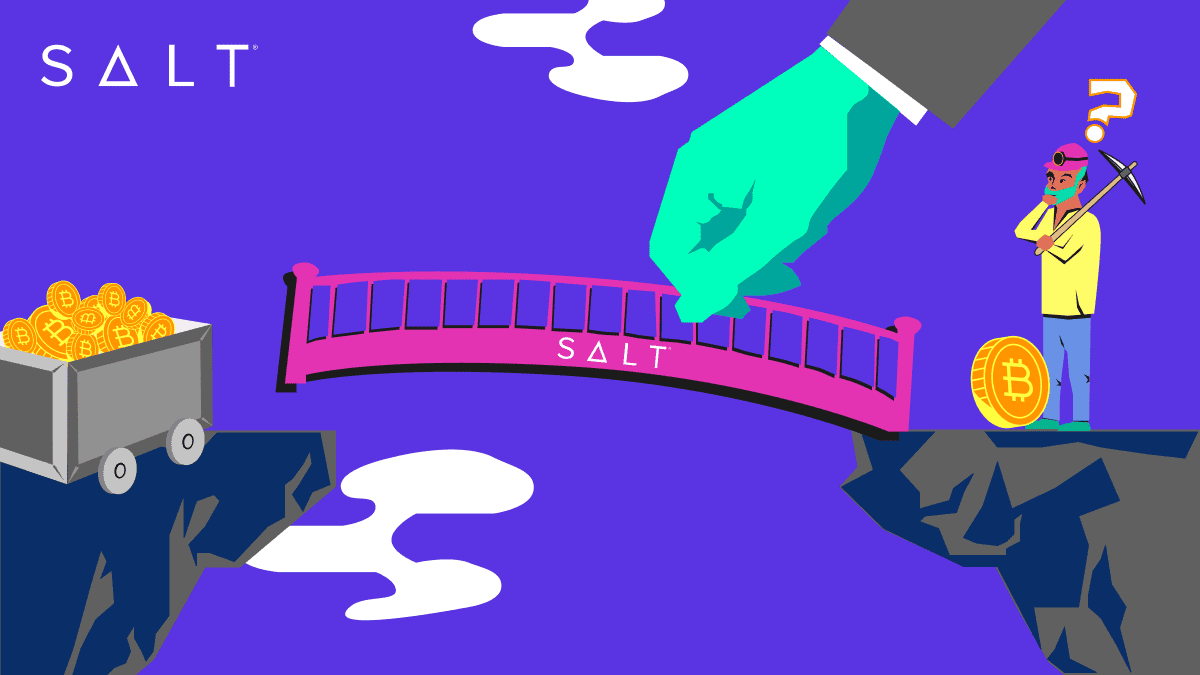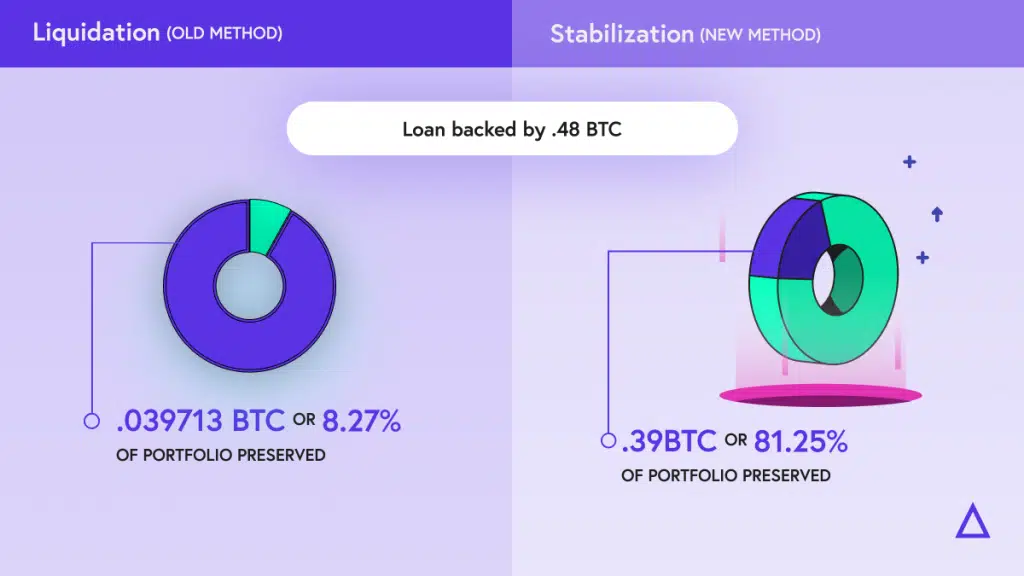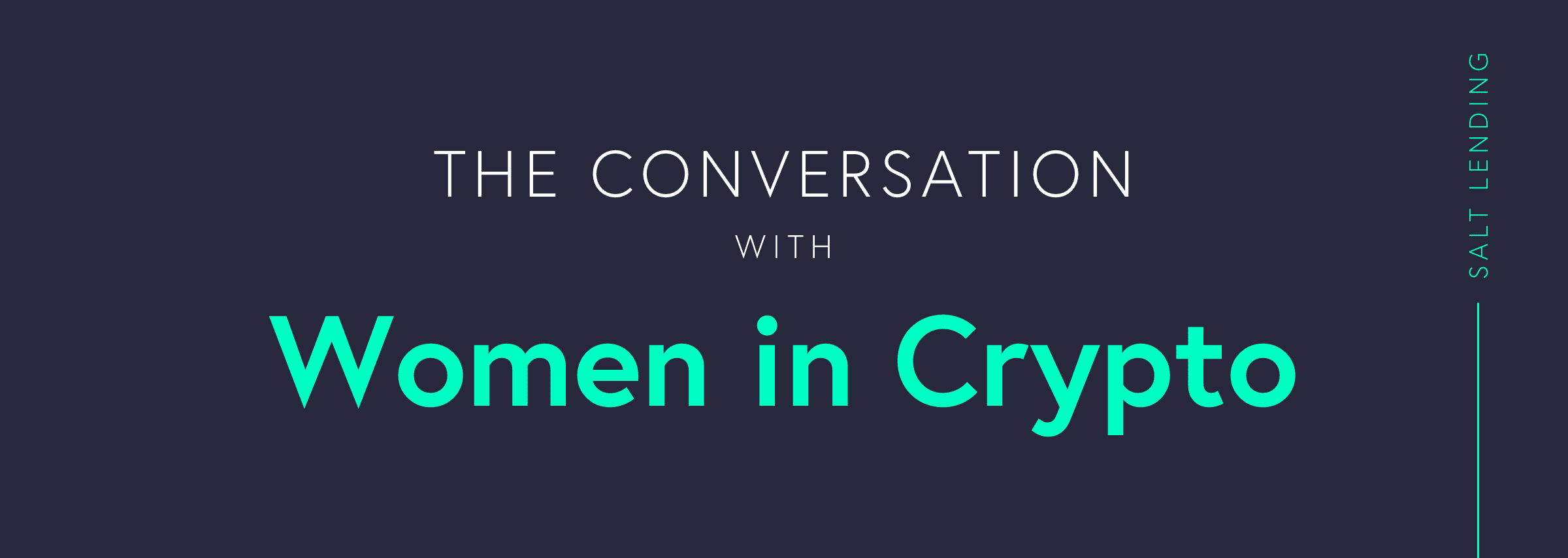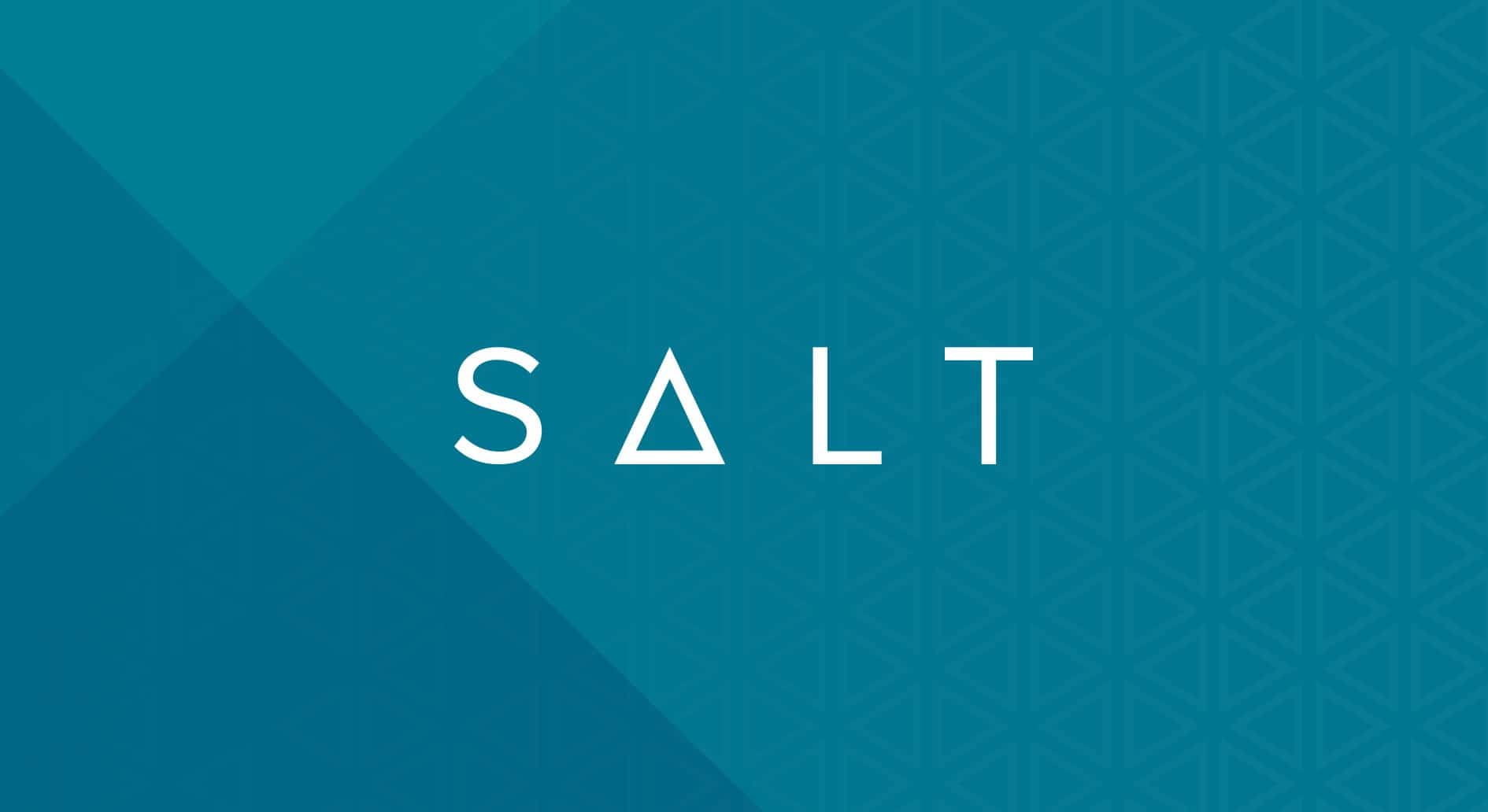Bitcoin mining is a crucial pillar of the bitcoin ecosystem, with miners playing an important role in validating transactions and securing the network. However, the path to mining success and mining growth is riddled with challenges, ranging from the inherent volatility of Bitcoin’s price, operational costs to the substantial capital expenditures required for mining equipment.
In this blog post, we will delve into these challenges and explore how SALT Lending’s Treasury Management Solution is changing the way miners operate and grow their businesses.
The Challenges of Bitcoin Mining
Bitcoin miners encounter numerous hurdles in their quest for mining success. These digital miners work hard to verify transactions, protect networks, and play a vital role in the ever-changing realm of cryptocurrencies. But the road to prosperity in the mining industry is paved with unique obstacles that demand better solutions. Here are some of the challenges they face:
Accumulating Crypto Assets: At the heart of a miner’s journey lies the accumulation of cryptocurrency, primarily Bitcoin, as a result of their mining efforts. This is the lifeblood of their operation, representing not just digital currency but also a belief in the potential of blockchain technology. However, as they amass these valuable assets, miners face a critical conundrum: should they sell any portion of their holdings to fund their operations or business ventures?
The Dilemma of Liquidity: Cryptocurrency miners have a strong desire to be “long” on Bitcoin and crypto, holding onto their assets for the long-term in anticipation of future value appreciation. Yet, the practical demands of running a business cannot be ignored. Miners need access to liquid cash to pay employees, finance new equipment, cover operational expenses, and ultimately, grow their companies.
Volatility and Revenue Projections: Bitcoin’s price is notoriously volatile, making it challenging for miners to predict their revenue accurately. SALT’s solution addresses this by enabling miners to borrow against their crypto holdings, providing flexibility in timing their asset sales.
Capital Expenditures (CapEx): Acquiring and upgrading mining equipment is a substantial capital expense for miners. SALT’s Treasury Management Solution allows miners to leverage the value of their bitcoin holdings to access cash, eliminating the need to sell assets and facilitating business growth.
Operational Costs: Managing operational costs, such as electricity consumption, is critical for profitability. SALT’s Treasury Management solution helps miners align the cost of electricity with the timing of rewards, enabling them to optimize when to sell bitcoin assets for maximum profit.
Navigating Bitcoin’s Price Rollercoaster: Strategies for Minimizing Volatility Impact

The cryptocurrency market is notorious for its wild price swings, and Bitcoin, as the flagship cryptocurrency, is no exception. For bitcoin miners, these price fluctuations present a significant challenge when it comes to revenue projections. The value of their mined assets can vary dramatically from one day to the next, making it challenging to predict and plan for the future. In this section, we explore how Bitcoin’s price volatility impacts miners and the strategies they can employ to mitigate this challenge.
The Rollercoaster Ride: Bitcoin’s price can skyrocket to new heights one day and plummet the next, creating a rollercoaster-like experience for miners. This unpredictability can disrupt revenue projections, as the value of their mined coins can fluctuate significantly before they have a chance to convert them into cash.
SALT’s Solution to Volatility: Here’s where SALT Lending’s Treasury Management Solution (TMS) shines. One of its primary benefits is its ability to smooth out this volatility for miners. Instead of being at the mercy of the market and feeling compelled to sell their crypto assets regardless of the prevailing price, miners can now employ a more strategic approach.
Strategic Timing: SALT’s TMS empowers miners to better time and manage when they sell their bitcoin. This means they don’t have to sell when the price is at a peak or settle for less when the price is low. By borrowing against their bitcoin, miners gain the flexibility to choose the optimal moments to liquidate their assets to fund their business operations.
Reducing Dependency: One of the key advantages of this approach is that it reduces miners’ dependency on immediate asset liquidation. They no longer have to sell their bitcoin holdings hastily when prices are unfavorable. Instead, they can smooth out their sales over time, aligning them with their business needs and market conditions.
As we continue to explore the challenges and solutions for bitcoin miners, we’ll delve deeper into how SALT’s TMS empowers miners to navigate the crypto landscape with confidence and strategic foresight. Stay with us to uncover more insights into the world of crypto mining and financial innovation.
Navigating Capital Expenditures and Operational Costs in Bitcoin Mining
For bitcoin mining, success hinges on several critical factors, including the significant capital expenditures (CapEx) required to acquire and maintain mining equipment. Additionally, operational costs, particularly electricity consumption, play a pivotal role in determining a miner’s profitability. In this section, we delve into the significance of CapEx and operational costs in mining while exploring how SALT’s Treasury Management Solution (TMS) can offer much-needed solutions.
Capital Expenditures (CapEx) in Mining
Capital expenditures, or CapEx, are the lifeblood of any bitcoin mining operation. Miners rely on specialized mining machines to perform the complex calculations required for validating transactions and securing the blockchain network. These machines are the workhorses of the operation, earning miners crypto rewards for their computational efforts.
The challenge arises when miners seek to upgrade their mining equipment or expand their operations. While they may want to hold onto their crypto assets for the long term, they often require cash to fund these essential upgrades and expansions. This creates a dilemma where miners must balance their desire to “HODL” crypto with the need to invest in their business’s growth.
SALT’s Solution: This is precisely where SALT’s Treasury Management Solution (TMS) helps miners. It allows miners to leverage the value of their existing bitcoin holdings to access cash without the necessity of selling their precious assets.
Operational Costs and Electricity Consumption
Operational costs represent another significant component of bitcoin mining. One of the most substantial operational expenses is electricity consumption. Miners require a consistent and substantial supply of electricity to power their mining equipment and maintain their operations.
One key insight we’ve gathered from miners is that SALT’s solution can effectively align the cost of electricity with the value of the rewards they receive from their mining activities. This synchronization addresses a common challenge faced by miners. Typically, miners perform the energy-intensive work required for mining in one month, such as June, but receive their rewards later, often in the subsequent month, like July. This timing misalignment can create a financial mismatch, forcing miners to sell their hard-earned Bitcoin immediately to cover their electricity bills.
The challenge lies in optimizing electricity consumption to ensure profitability. Mining during periods of high energy costs or without considering the timing of electricity bills can erode profit margins significantly. Mismanaging electricity expenses can lead to financial strain, particularly during periods of market volatility.
SALT’s Solution: By providing access to cash liquidity, miners can better align the cost of electricity with the timing of their crypto rewards. This flexibility enables miners to choose when to sell their crypto assets, ensuring they can maximize profitability by avoiding unfavorable market conditions.
The Power of Timing: By leveraging SALT’s TMS and gaining access to cash liquidity through a loan, miners can bridge this gap and synchronize their financial flows more effectively. This synchronization means they don’t have to sell their Bitcoin assets right away, even when electricity bills come due. Instead, they can better choose when to sell their bitcoin, allowing them to optimize the selling price.
Why Timing Matters: The significance of this synchronization cannot be overstated. Matching the price of power to the value of rewards is a critical factor in understanding the profitability of mining operations. By harmonizing energy costs with mining rewards, miners can run their operations more efficiently and profitably.
The Importance of Smoothing: The concept of smoothing operational and capital costs for miners is invaluable, especially given the inherent volatility of cryptocurrencies. The longer the window of time provided for flexibility in selling crypto assets if necessary, the less miners are forced to sell during market dips. This means miners can hold onto their assets for longer, waiting for opportune moments to sell when the market is in their favor. As a result, they can extract the greatest possible value from their holdings while selling as little as possible to fund their operations.
Energy Producers and Bitcoin Miners: A Symbiotic Relationship
You might have noticed a unique synergy has emerged between energy producers and Bitcoin mining companies. This partnership is exemplified by recent developments, such as RIOT Blockchain’s experience in Texas, where energy credits took a prominent role in Bitcoin mining. In this section, we explore this intriguing dynamic and the pivotal role of energy in the mining landscape.
Bitcoin and Energy: Energy is not merely an expense for miners; it’s the lifeblood of their operations. Bitcoin mining involves solving complex mathematical puzzles, a process that demands substantial computational power and electricity consumption. Miners invest in powerful equipment, all with the goal of earning Bitcoin rewards.
Bitcoin as Energy’s End Result: Bitcoin can be viewed as a unique representation of energy. It embodies the value generated through electricity consumption during the mining process. Miners provide the computational muscle to validate transactions and secure the Bitcoin network, making Bitcoin synonymous with the energy invested in its creation.
Balancing Act for Miners: Miners primarily generate revenue through mining, but external factors, like energy grid demand, can lead energy companies to request temporary shutdowns. Miners face a crucial decision: to power down their mining rigs or not. This decision hinges on comparing the value of energy credits offered for a shutdown against potential rewards from ongoing mining.
The Riot Example: In August, Riot Blockchain notably earned a significant portion of its income from energy credits rather than Bitcoin rewards. This shift underscores the evolving relationship between energy and mining in the crypto realm.
The Profitability Equation: As mining competition intensifies, the likelihood of earning Bitcoin rewards diminishes. Energy companies recognize the value of miners reducing grid loads during peak demand periods, incentivizing miners with high-value energy credits for temporary shutdowns. Miners must weigh potential gains from energy credits against the income they’d earn from mining during the same period.
Navigating these dynamic elements of mining and energy pricing is pivotal for miners. The flexibility to decide when to sell Bitcoin, spend cash, or accumulate assets is a strategic advantage. SALT’s Treasury Management Solution provides miners with this flexibility, empowering them to make informed decisions and optimize their financial strategies.
Liquidity: A Solution for Miners
Bitcoin miners often find themselves facing a unique challenge akin to what homeowners sometimes experience – liquidity constraints. To illustrate this, consider the concept of being “house poor.” In this scenario, individuals own a house with substantial value, yet their wealth is essentially locked up within the property. While they possess significant assets, they can’t readily access this wealth to start a business, make everyday purchases, or participate in the broader economy.
Miners encounter a similar predicament. They may successfully accumulate bitcoin through their mining endeavors, amassing digital assets with considerable value. However, accessing this wealth can be a daunting task. Miners are hesitant to sell their hard-earned bitcoin, especially when market conditions are unfavorable. The ‘HODL’ mentality prevails, as selling may not be advantageous during a market downturn.
SALT Treasury Management Solution provides miners with a much-needed tool to unlock liquidity from their crypto holdings. With this newfound liquidity, miners can finance their businesses, pay employees, and engage with traditional financial systems to facilitate the growth of their mining companies.
Traditional Treasury Management vs. SALT’s Treasury Management Solution for Miners
In traditional treasury management, corporate treasury departments often have access to a wide array of options provided by banks and financial institutions. These options include securing capital based on projected revenues, managing inventories, tapping into committed sales, exploring venture debt, and utilizing various financial vehicles to obtain the liquidity necessary for their business operations. Traditional treasury practices are well-established and readily available to a wide range of businesses.
However, this landscape dramatically differs for bitcoin miners. Until the launch of SALT’s Treasury Management Solution, miners had limited access to similar financial tools and services. The bitcoin industry, while rapidly growing, lacked the comprehensive financial infrastructure that traditional businesses enjoyed. Miners faced challenges in unlocking the value of their bitcoin and converting them into practical resources for their operations.
SALT: Bridging the Gap and Fueling Mining Growth
SALT’s Treasury Management Solution serves as a bridge that spans this financial divide for miners. It plays a pivotal role in empowering miners to leverage the value of their crypto assets while continuing to hold and accumulate them during their mining endeavors. This dynamic shift is what sets SALT apart in the world of bitcoin mining.
SALT doesn’t merely offer access to liquidity; it does so with an understanding of the unique needs and challenges faced by miners. With competitive rates compared to traditional finance (TradFi), SALT’s TMS provides a valuable alternative for miners. It recognizes the importance of managing custodial relationships securely, ensuring that miners have control over their assets while still accessing the cash they require.
SALT’s Treasury Management Solution acts as a catalyst for miners’ growth within the bitcoin ecosystem. It enables them to unlock the potential of their bitcoin holdings, granting them the financial flexibility needed to fuel their mining operations and expand their businesses. SALT’s innovative approach not only bridges the gap between the traditional financial world and the crypto space but also paves the way for miners to thrive in an industry where such opportunities were previously scarce.
Looking Ahead: The Future of Mining Growth
The future of mining growth is closely tied to regulatory changes and compliance. SALT is committed to staying updated with evolving regulations, helping miners navigate this complex landscape. Through its Treasury Management Solution, SALT envisions supporting the growth and sustainability of the bitcoin mining industry by providing miners with the financial tools they need to thrive.
SALT’s commitment to staying at the forefront of regulatory developments ensures that miners have a trusted partner on their journey towards success in the crypto mining industry.
You can read more about SALT’s Treasury Management for Bitcoin Miners here.









